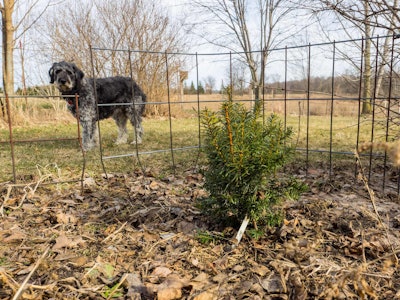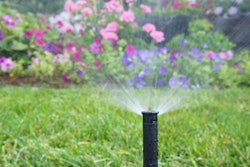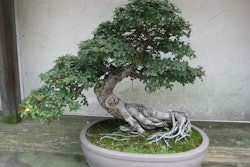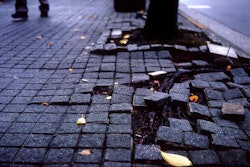 Japanese yew is one of the toxic landscaping plants Idaho is debating about banning.
Japanese yew is one of the toxic landscaping plants Idaho is debating about banning.Photo: F.D. Richards/Flickr
The battle for yew plants to be kept off the noxious weeds list in Idaho has begun in earnest as representatives from nurseries and citizens gathered yesterday to speak their piece during the first step in the rulemaking process.
Yew poisoning has been listed for the cause of death for at least 28 elk, 50 pronghorns and an unknown number of deer statewide this winter as the harsh conditions caused the big game to seek out vegetation in more urban areas.
Yew contains alkaloids that causes cardiac arrest and is toxic to people, dogs, livestock and wildlife.
“They die pretty quick because their heart stops,” Mark Drew, wildlife veterinarian for Idaho Fish and Game told the Idaho Statesman. “Some of those animals died with yew leaves in their oral cavities and esophagus.”
Ever since the first report of elk deaths from ingesting toxic yews Angela Rossmann, a member of Great Old Broads for Wilderness, has been on a warpath, speaking to city, county and state government officials and media outlets to increase the education on this deadly landscaping plant.
Rossmann had also petitioned the Idaho State Department of Agriculture (ISDA) to list Japanese, Chinese and English yews as noxious weeds.
Noxious weeds in Idaho are defined as “any plant having the potential to cause injury to public health, crops, livestock, land or other property; and which are designated as noxious by the director (of ISDA).”
“We have a mess, and the question is how do we best form a solution,” she told the Idaho Statesman. “It certainly was never my intention to take it to the state level. I was naïve enough to think as a community we have wholesalers who would make the conscious, moral decision to protect the public safety.”
Despite Rossmann’s complaints, there are some nurseries and garden centers that are taking the toxicity of yews into account.
FarWest Landscape and Garden Center in Boise has been offering customers a $30 credit for a replacement shrub when they bring in their yew. The company will dispose of the yew, but it does still offer the plant for sale, which has gathered mixed reactions from customers.
“We’re educating (customers) like crazy,” Dennis Fix, owner of FarWest Landscape and Garden Center, told the Idaho Statesman. “It does have spots where it really works. I don’t think we should wipe it off the board just because of a one-year event.”
Choosing between a temporary, emergency rule that requires the governor’s approval and a lengthy negotiated rulemaking process, Rossmann chose to pursue the latter.
The Idaho Nursery & Landscape Association (INLA) opposed the petition to initiate negotiated rulemaking and wrote a letter pointing out that this sort of regulation could open up a Pandora’s box of governance against other landscaping plants.
“I just don’t want that – ‘knee-jerk’ is probably the best word – reaction to something that was so unusual that happened last (winter),” Ann Bates, executive director of INLA, told the Idaho Statesman. “I don’t want to send our regulators and everybody into a spin when it doesn’t have to be that way.”
Yet if precedent is any indicator as to how this negotiated rulemaking will play out, one only needs to look at Blaine County in central Idaho. In winter 2016, a similar situation occurred there where more than 20 elk died from ingesting yew.
An ordinance was passed that went into effect in March 2016 banning the buying, selling or owning of Japanese, Chinese and English yew plants along with their hybrids. To give the new rule some teeth the ordinance was made a misdemeanor punishable by up to six months in jail and up to $6,000 in fines.
“That’s not intended to serve the punishment purpose, but to give us leverage,” Tim Graves, county chief deputy prosecuting attorney, told the Idaho Mountain Express. “The primary goal of this ordinance should be voluntary compliance.”
As for the statewide legislation, interested parties have four options they can consider:
- Adding Japanese and English yew to the statewide containment list for noxious weeds, which would permit weed control effort against yews, but not require active measures to reduce known populations. It would also ban the sale of yews in the state.
- Creating a warning label for Japanese and English yew, as well as any other poisonous plants.
- Creating a poisonous plants designation and allowing county weed superintendents to designate areas of high or low risk for wildlife. Poisonous plants found in high-risk areas would be destroyed.
- Adding all Taxus plants (yews) to the statewide prohibited list with no exceptions.
The main problem with the fourth option is that Pacific yew is native to the state and is important food source for big game.
The ISDA will have to have a proposed rule by August and finalize the proposal in November so it can be considered by the Legislature in the 2018 session. If either the House or Senate approve of the rule it will be adopted.










